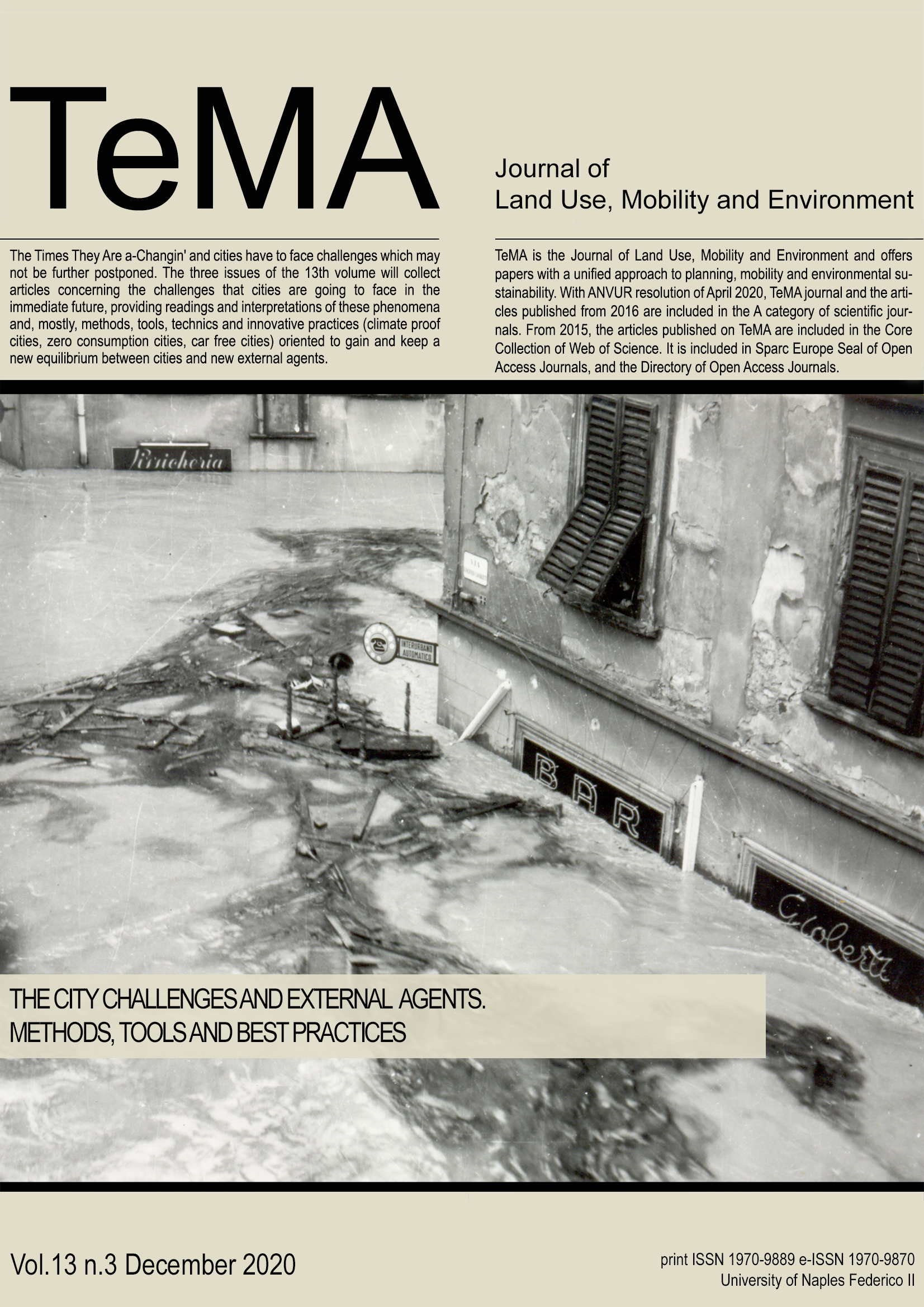Land surface temperature and land cover dynamics. A study related to Sardinia, Italy
DOI:
https://doi.org/10.6092/1970-9870/7143Keywords:
Land surface temperature, Land cover, Regulating ecosystem servicesAbstract
This study aims at analyzing analogies and differences between the spatial relations regarding land surface temperature (LST) and land covers in May and August 2019. Land cover data are drawn from the most updated spatial datasets available from Copernicus, while LST is retrieved from Landsat 8 satellite images made available by the U.S. Geological Survey. The methodology couples GIS spatial analysis and regression analysis; the latter is used to implement spatial inferential analysis as regards LST. Moreover, on the basis of a “what if” assessment, the impact of future afforestation, as regards rural areas, is detected with respect to decrease in LST, building on the outcomes of the model which relates LST to land cover types. The Sardinian region is taken as case study because its climate homogeneity and its self-containment allow for a pretty straightforward identification of the regional boundaries. The correlation between the spatial distribution of LST and land cover reveals, in the two time periods, that urbanization and the spatial dynamics of heating phenomena are closely connected. The methodology can be easily implemented in other regional contexts, and comparison of analogies and differences are quite effective and useful in identifying stylized facts and policy implications.
Downloads
Downloads
Published
How to Cite
Issue
Section
License
Authors who publish in this journal agree to the following:
1. Authors retain the rights to their work and give in to the journal the right of first publication of the work simultaneously licensed under a Creative Commons License - Attribution that allows others to share the work indicating the authorship and the initial publication in this journal.
2. Authors can adhere to other agreements of non-exclusive license for the distribution of the published version of the work (ex. To deposit it in an institutional repository or to publish it in a monography), provided to indicate that the document was first published in this journal.
3. Authors can distribute their work online (ex. In institutional repositories or in their website) prior to and during the submission process, as it can lead to productive exchanges and it can increase the quotations of the published work (See The Effect of Open Access)


